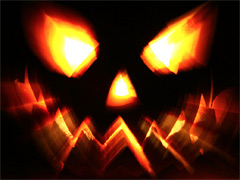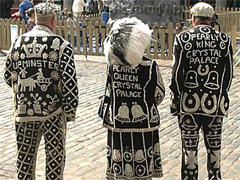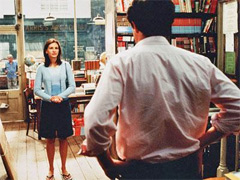


Pagans vs Christians
There has been a celebration on the 31st of October since ancient times. A pagan Celtic festival called Samhain honoured the end of the harvest (the word “samhain” means “end of the summer”). For the Celts this coincided with the last day of October, and they believed that on this night the barriers between the living and the dead were at their weakest, making it easy for evil spirits to visit the earth and get up to mischief. They handled this by making bonfires and dancing around them, which they thought would ward off bad forces. They also left a bowl of fruit outside their homes, hoping the ghosts would get distracted by eating rather than come inside.
Saints and martyrs have been commemorated on the 1st of November (All Saints Day) since 837AD. Christian tradition dictates that people go to church and take the day off work. In England it became known as All Hallows Day, as “hallows” is an old English word for “saints”; as the day before is the eve, or the even, over the years All Hallows Eve became Halloween, although to be pedantic, the correct spelling is Hallowe’en. Some believe that Christians deliberately named the 31st of October Halloween to remove ties with the pagan festival of Samhain.
The 2nd of November (or the 3rd if it falls on a Sunday) is All Souls Day, when the dead are honoured.
In medieval times the poor would go ‘souling’, which was not attempting to invoke dead people’s souls, but going from door to door asking for food in exchange for praying for any loved ones that had passed away.
\n\nAnd then there was Hallowe’en
There is no certainty as to where Halloween traditions like hollowing out a pumpkin stem from, although it’s clear they have evolved over time, probably from several different rituals. It’s possible that the fires made by the Celts to scare the ghosts away are what started Halloween’s association with bats and creepy crawlies, as the fire would draw in moths and other insects, which in turn would attract bats. The Celts also wore masks and other disguises to fool the spirits into thinking they were ghosts too, and this could be where dressing up in scary costumes comes from.
The practice of trick or treating may derive from souling, albeit with a very modern twist - hand over the sweets/money or your house gets egged.
And why do people make Jack-o-lanterns out of pumpkins? There are many myths surrounding Jack, but according to Irish folklore he was a watchman condemned to stay on earth with his lantern till Judgement Day, as he wasn’t eligible for either hell or heaven having played pranks on the devil and been too much of a penny pincher. His home definitely would have seen a few eggs.
How to celebrate
Plenty can be done to celebrate the ghostly occasion, and it doesn’t have to involve buying the cupcakes decorated with skulls that supermarkets start selling in August.
Visit the London Dungeon, which puts on special shows for Halloween in addition to its year-round performances featuring torturers and plague doctors. Although realistically, you won’t find any of this frightening unless you’re under the age of ten.
Alternatively there is the Clink Prison Museum, where Britain’s most infamous prison once was, the Wellcome Collection with its instruments of torture and shrunken heads, the Old Operating Theatre Museum which has one of the first in the world, and the Hunterian Museum, which displays prehistoric skeletons and surgical implements.
\n\nGhost walks and Jack the Ripper tours run all year round, but it’s always spookier to wander around graveyards and quiet alleyways on cold, dark evenings.
If you don’t feel like following a guide why not visit London’s haunted spots yourself? Here are a few places to get you started.
Buy something macabre from the Little Shop of Horrors on Mare Street in Hackney. They have animal skeletons and taxidermy, including an eight-legged lamb and a dog giving birth to a piglet.
The London Eye usually puts on children’s events like storytelling, with suitably frightening themes of course. The London Zoo also hosts special activities for all the family, like trails through the Night Zone where the nocturnal animals live, or you could just watch the vultures regarding everyone with disdain and the boa constrictors digesting their dinner.
Watch a double bill of horror films. Check cinema listings as some host parties with food, drink and more. Or stay at home with the DVDs and turn all the lights off.
Despite the ghoulish theme, many use Halloween as an excuse to wear revealing outfits (see Lara Croft, French maids and naughty nurses) or just dress as characters who have nothing to do with the occasion at all. Whichever your preference, Angels Fancy Dress on Shaftesbury Avenue is one of London’s biggest fancy dress shops and caters to everyone; it’s also been going for 170 years.
Once you’ve got your costume sorted, head to a club night where you can dance the night away while impressing everyone with your outfit. If you’re feeling particularly confident pick a party where there’s a prize for the best dressed.
Indulge in themed cocktails and food; there are plenty of bars concocting drinks with eyeballs and food that looks like bleeding fingers at this time of year. Commercial opportunism? Of course, but it’s better than staying at home having to deal with trick or treaters.


